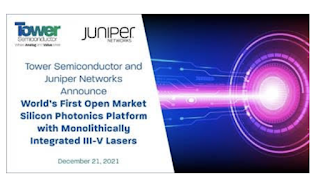AMD agreed to acquire Pensando, a Silicon Valley start-up offering a software-defined edge services platform powered by a custom packet processor, for approximately $1.9 billion before working capital and other adjustments.
Pensando ("thinking" in Spanish) is led by Cisco’s legendary “MPLS” team — Mario Mazzola, Prem Jain, Luca Cafiero, Soni Jiandani and Randy Pond. Its platform is designed to accelerate networking, security, storage and other services for cloud, enterprise and edge applications. Its architecture leverages the programmable packet processor distributed throughout a network to efficiently accelerate multiple infrastructure services simultaneously, offloading workloads from the CPU and increasing overall system performance. The company says it can achieve between 8x and 13x greater performance compared to competitive solutions.
Pensando claims multiple deployments at scale across cloud and enterprise customers, including Goldman Sachs, IBM Cloud, Microsoft Azure and Oracle Cloud.
“To build a leading-edge data center with the best performance, security, flexibility and lowest total cost of ownership requires a wide range of compute engines,” said Dr. Lisa Su, AMD chair and CEO. “All major cloud and OEM customers have adopted EPYC processors to power their data center offerings. Today, with our acquisition of Pensando, we add a leading distributed services platform to our high-performance CPU, GPU, FPGA and adaptive SoC portfolio. The Pensando team brings world-class expertise and a proven track record of innovation at the chip, software and platform level which expands our ability to offer leadership solutions for our cloud, enterprise and edge customers.”
“We are excited to join the AMD family. Our shared cultures of innovation, excellence and relentless focus on partners and customers make this an ideal combination. Together, we have the talent and tools to deliver on our customers’ vision for the future of computing,” said Pensando CEO Prem Jain. “In less than five years Pensando has assembled a best-in-class engineering team that are experts in building systems together with a rich, deep ecosystem of partners and customers who have currently deployed over 100,000 Pensando platforms into production. Joining together with AMD will help accelerate growth in our core business and enable us to pursue a much larger customer base across more markets.”
“Industry leadership is based on catching business model disruptions enabled by new technologies,” said John Chambers, chair of the board of Pensando. "Pensando is built upon strong customer relationships and a solution that is at least two years ahead in cloud, edge and enterprise. For example, the performance and scale of Pensando’s distributed services platform is 8x-13x of the largest cloud provider and uses less power. Pensando’s smart switching architecture has 100x the scale, 10x the performance at one-third the cost of ownership of any comparable products in the enterprise market. Pensando’s leadership position in software-defined cloud, compute, networking, security and storage services as part of the much larger AMD portfolio is in my opinion a perfect fit to shape the data center computing landscape for the next decade.”
CEO Prem Jain and the Pensando team will join AMD as part of the Data Center Solutions Group, led by AMD Senior Vice President and General Manager Forrest Norrod. Pensando will remain focused on executing their product and technology roadmaps, now with additional scale to accelerate their business and address growing market opportunities across a broader number of customers.
Pensado emerges from stealth, led by "MPLS" team from Cisco
Pensando Systems, a start-up based in San Jose, California, emerged from stealth to unveil its first product -- a software-defined edge services platform that was developed in collaboration with the world’s largest cloud, enterprise, storage, and telecommunications companies.
The Pensando platform is a custom programmable processor optimized to execute a software stack delivering cloud, compute, networking, storage and security services wherever data is located, all managed via its Venice Centralized Policy and Services Controller. The platform delivers highly programmable software-defined cloud, compute, networking, storage, and security services wherever data is located.
The platform promises an improved security posture through distributed network protection and east-west security. It offloads networking and security functions at wire speed to dedicated accelerators, and it is designed to scale to > 1000 tenants per server and >1M routes.
The company claims its capability means that cloud providers can now gain a technological advantage over the current market leader, Amazon Web Services Nitro, delivering 5-9x improvements in productivity, performance, and scale when compared to current architectures with no risk of lock-in.
The portfolio includes:
- Naples 100 and Naples 25 cards for installation in standard servers. The Naples Distributed Services Card (DSC) delivers high-performance cloud, compute, networking, storage and security functions.
- Venice Centralized Policy and Services Controller - Centrally-managed enterprise-grade security and visibility at every level of the stack enables seamless distribution of all infrastructure services policies to active Naples nodes. In addition, Venice handles lifecycle management such as deploying in-service software upgrades to Naples nodes and delivers always-on telemetry, deep end-to-end observability, and operational simplicity across the environment.
Are next-gen SmartNICs gaining traction with top cloud providers?

VMware's Project Monterey for SmartNICs - Pensando's perspective

AMD completes acquisition of Xilinx

Xilinx looks beyond FPGAs with Adaptive Compute Acceleration Platform

Xilinx to acquire Solarflare for SmartNIC solutions


























